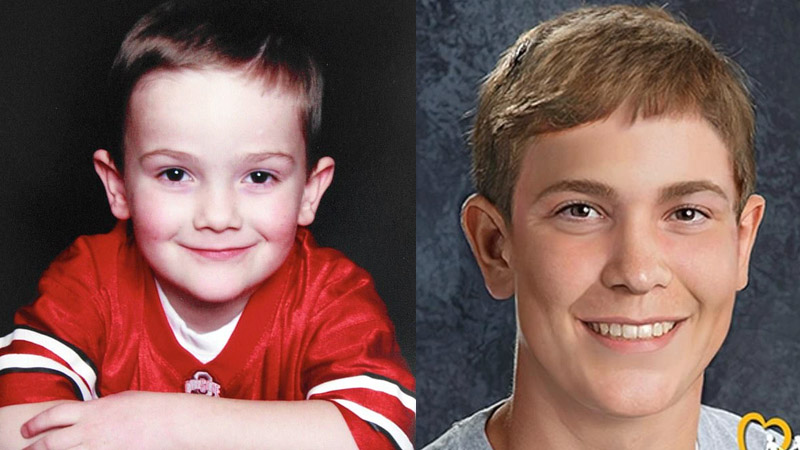
Thirteen Years Later Timothy Pitzen’s Grandmother Believes He Was Hidden in a Mormon Commune
Share0Thirteen years ago, the disappearance of six-year-old Timothy Pitzen left his family and the nation in shock and grief. Timothy’s case took a particularly tragic turn when his mother, Amy Fry-Pitzen, was found dead in a motel room in Rockford, Illinois, from an apparent suicide. According to DAILY MAIL, She left behind a cryptic note stating that Timothy was safe but would never be found. This heartbreaking mystery has lingered for years, and recent developments suggest a new theory held by Timothy’s grandmother, Alana Anderson, that has added a layer of complexity and hope to the case.
Alana Anderson believes that Amy might have placed Timothy in a Mormon commune before taking her own life. This theory stems from the peculiar circumstances and movements of Amy in the days leading up to her death. Amy took Timothy out of school on May 11, 2011, and embarked on a three-day trip, visiting water parks and resorts in Illinois and Wisconsin. The seemingly joyful trip ended abruptly with Amy’s death and Timothy’s inexplicable disappearance.
The idea that Timothy could be hidden in a Mormon commune is not without basis. Amy had exhibited interest in various religious groups, and there were indications that she might have sought refuge or assistance from such communities. The notion of a commune offers a scenario where Timothy could have been taken in and raised with a level of anonymity, in line with Amy’s statement that Timothy would never be found. Alana Anderson’s theory suggests that Amy might have trusted a secluded and close-knit community to care for her son, away from the public eye and law enforcement scrutiny.
This theory has prompted renewed interest and hope among Timothy’s family and the wider public. While it is speculative, it offers a possible explanation that aligns with Amy’s enigmatic note. Investigations have periodically revisited the case with this new perspective in mind. Law enforcement has considered the possibility, yet finding concrete evidence or leads within such secluded communities remains a formidable challenge.
Alana Anderson’s belief is driven by a combination of hope and intuition. The anguish of not knowing Timothy’s fate has been a heavy burden on the family. The possibility that he might be alive, albeit hidden away, provides a glimmer of hope amidst years of uncertainty and sorrow. Anderson has urged anyone with information about Timothy or possible locations of such communes to come forward, emphasizing the family’s enduring love and longing for him.
This theory also highlights the broader issue of missing children and the lengths to which families will go to find answers. Cases like Timothy Pitzen’s are a reminder of the enduring pain and hope that families of missing children experience. They illustrate the complex nature of missing persons investigations, where even years later, new theories and leads can emerge, rekindling hope and efforts for resolution.
In summary, the belief held by Timothy Pitzen’s grandmother that he may have been placed in a Mormon commune by his mother before her tragic suicide is a poignant development in a long-standing mystery. It encapsulates the enduring hope and desperation of a family seeking closure. While the truth remains elusive, the theory offers a renewed direction for investigation and a heartfelt plea for answers.
